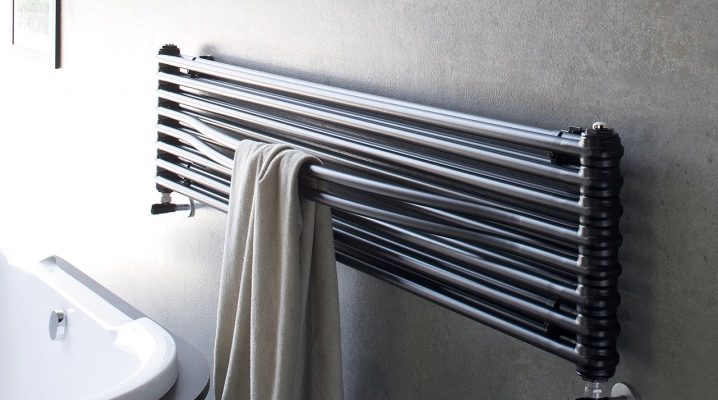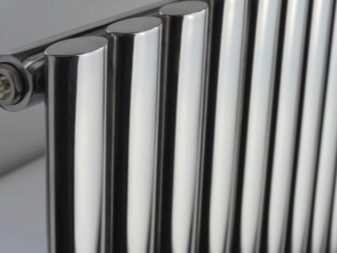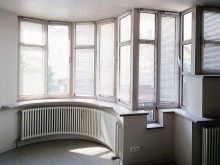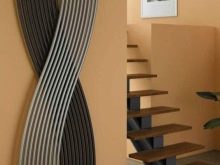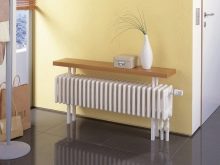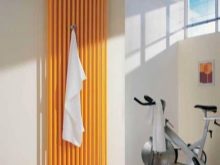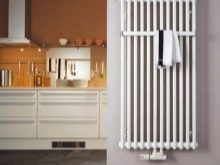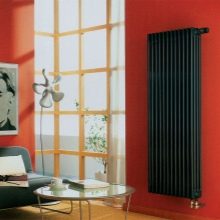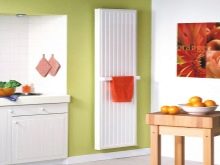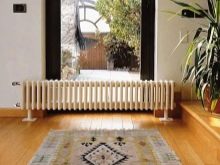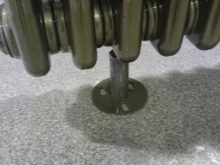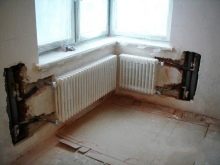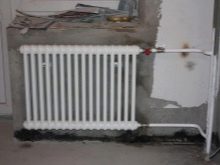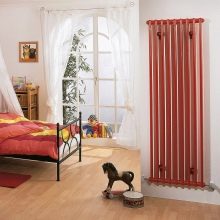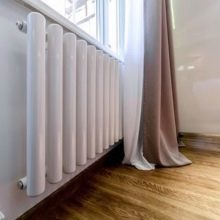Steel tubular radiators: a new solution for home heating
Creating a heating system in the house, you need to think not only about the quality of boilers or heat sources, but also about pipes, pumps and regulators. A very important role is played by the last link - radiators. When choosing them, pay attention to the latest developments.
Special features
Steel tubular heating radiators are designed to warm the air using the internal movement of the coolant. Each such battery is formed by a pair of mutually parallel collectors connected by tubes. At the present stage, such devices look quite attractive, are mounted without unnecessary problems and operated for a long time. Leading manufacturers, both Russian and foreign, use high-strength steel joined by laser welding.
This approach allows to avoid the occurrence of seams and clogging of cavities with metal fragments, to reduce to zero the risk of water leakage between sections.
The outer shell of each battery undergoes thorough processing, it is cleaned and primed, and then painted and dried strictly according to the technology. This solution allows you to ensure reliable retention of varnish or powder composition on the surface of the radiator as long as possible. There are two main types of radiators: with horizontal pipes and with vertical manifolds or, on the contrary, with pipes installed vertically and horizontally oriented collectors.
There is still a distinction in form, namely:
- flat - tubes are oriented in the form of an even row;
- Corner - installation at the joints of the walls;
- radial - mounted in rooms that do not have corners;
- wavy format.
Options
The height of the tubular radiators is not less than 190 mm, the maximum is 300 cm, the length ranges from 0.18 to 3 m, the minimum depth is 70 mm.
The cross section of the tubes can be made in such forms as:
- a circle;
- square;
- oval;
- triangle.
Reviews of consumers and professionals show that these minor aesthetic differences in fact do not affect the level of thermal efficiency.The nominal operating pressure is 12 atm. The crimping pressure is 15 atm. It should be noted that the Russian-made structures are designed for pressure testing at 22.5 atm, their wall thickness reaches 0.2 cm (for imported analogues - 0.15 cm). The assembly can include up to 30 sections, each of them gives out from 80 to 120 W of heat per hour. The distance from one section to another is 450 or 650 mm.
The leading models of the modern model, including those released in Russia, are covered inside with a special film. It reliably blocks the development of corrosion in the tubes and increases the total time of operation. Domestic products have a standardized tube diameter of 2.5 cm, while foreign products do not have such strictness. Section can be formed by 1-6 tubes. Therefore, the choice is actually very large, you need to carefully understand the intricacies with the help of specialists.
Positive and negative sides
Immediately it is worth making a reservation that all tubular radiators made of steel should be divided into vertical and horizontal groups. The first heats the room using infrared radiation and convection, which is provided by an oval gap between every two tubes.
Steel radiators of the last generation surpass analogues in the following characteristics:
- ability to carry pressure jerks;
- protection from clogging of the thermal circuit with air when the heating equipment is stopped;
- thermal inertia;
- smoothness that facilitates cleaning, and not just looks beautiful;
- resistance to leaks between sections;
- duration of normal use;
- the possibility of selection for a specific appearance of the room and its style.
If desired, additional sections can be attached to the standard delivery. Equipment is easy to install. Almost always, the full range of fasteners required is handed over with the goods. Consumers can choose the lower or side connection, if the traditional way for them for some reason inconvenient. Another important advantage is associated with the geometric shape of the product - there are no sharp corners in it, so it is perfectly safe for schools, kindergartens and medical institutions.
Of course, for home installation, pipe radiators of this type should also be used by all responsible owners who are trying to secure their home as much as possible.It is very good that such batteries do not dry out the air. But the thermal conductivity, which is higher compared to iron, requires the installation of regulating units that allow you to quickly adjust the temperature.
As for weaknesses, first of all it is worth mentioning the reduced effectiveness in comparison with other methods. Bimetallic radiators per unit area give off more heat, so steel models are used when heating rooms of small size.
Even the best steel can corrode. If the concentration of mineral salts in the water is very high, the risk of such a development of the event immediately increases. You can compensate for this danger by buying products with reliable films and thickened walls. In private possession, antifreeze as a coolant is better than water, because it precisely excludes chemical destruction of the metal. But the cost of this option and additional difficulties in its use can also be considered a limitation.
How to choose?
Steel tubular radiators perform well. But in order not to be disappointed in the result obtained, it is necessary to carefully calculate the required power, which is determined by the number of pipes and their diameter. To warm a room of 15 square meters.m, insulated according to all the rules, taking into account the average thermal efficiency, will have to put 15 sections. But it should not be forgotten that several external walls increase the heat loss by 1/5, and when two windows come out, they grow by 30%. The larger the single tube, the sooner they are in the room feel the heat.
Maximizing the number of pipes in the first section does not make sense.as this will require creating a very deep niche or come to terms with bulging the battery into the room. All experts believe that you can not buy a tubular radiator, released a little-known company. If you plan at least in the future to connect to central heating, you need to choose domestic designs. They are not at all worse in consumer properties, but they ideally respond to the characteristics of this type of heating. Abroad, it is much less common, and even formally the corresponding products can be tuned to other parameters.
Connection and installation
Even the best type of radiator can be useless with improper installation. The floor block is placed on metal legs.Angular execution usually involves mounting on a wall, sometimes with a large number of turns. These batteries are made only by individual order, which increases their cost relative to analogues. The wall-mounted tubular heating unit is more demanded, but its height is limited for technical reasons.
Attention should be paid to the choice of reliable products for fasteningwhich must be especially sturdy when installed on the floor. When the battery is connected, the need to crimp it cannot be ignored. Only this procedure helps to ensure 100% that any risks of leakage are excluded. Widespread tubular radiators received in the kitchens, in the corridors, in the guest and bathrooms.
Most experts believe that putting them is required under the windows or in the immediate vicinity of the door to compensate for the passage of cold air.
Additional Information
Whenever possible, you should choose those tubular radiators, which are also convectors at the same time. In their tubes, the walls are double, the coolant circulates inside.This solution allows the simultaneous use of infrared radiation and heated air convection for heating. The best technical and design models are made of stainless steel. When there are available funds, it is better to make an individual order, which will help you choose the most accurate design.
Design characteristics of radiators in this case are the most attractive. They become a frame for mirrors and furniture. Sometimes it’s impossible to guess at all about the heating effect of an object in the interior. To focus on the battery and it is beneficial to emphasize helps specialized backlighting. An individual order will help to put the radiator even in a semicircular niche and in another uncomfortable place.
Known designs of tubular heating devices, which in appearance resemble the following:
- street shop;
- stair railing;
- other enclosing barriers.
Warm seats, for example, it is quite logical to use for a sauna or a bath, for a winter garden. You can even bring them to the unheated verandas and terraces.It is not necessary to use wood for this design, there are more modern and sustainable materials. It should be noted that even the usual heated towel rails are a kind of tubular radiators made of steel. It is recommended to carefully approach the choice of appearance, so that it is consistent with the home design.
Installation of tubular radiators - in the following video.
